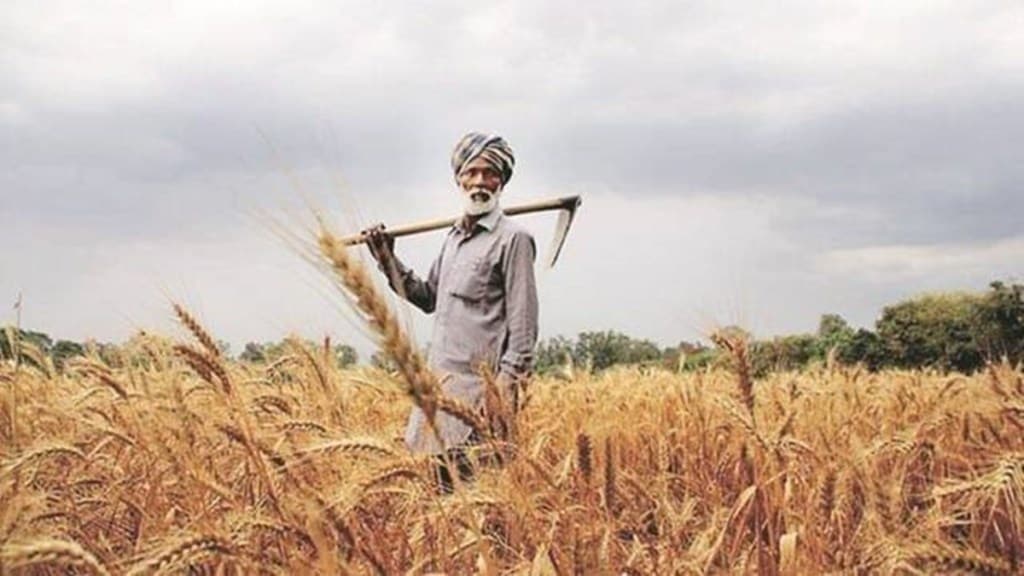The government will implement a revamped Pradhan Mantri Fasal Bima Yojana (PMFBY) from Kharif 2023 season, where insurers’ concerns about profitability will be addressed, even as the subsidy burden on the government will be capped.
Thrust on the use of artificial intelligence (AI) based technologies for timely assessment of crop yield data and resultant quicker claim settlement will be the other key features of the renewed crop insurance scheme.
The need for revamping the scheme arose because a rise in premium rates have inflated subsidy liability of the government, forcing many state governments to discontinue the scheme.
Also read: 16th Finance Commission to be set up by November
The states will now have the option to choose between two ‘Cup and Cap’ models where the insurance companies would have to pay claims to farmers, within two bands – 60-130% and 80-110% – of the gross premium collected.
If the claims are below 60% or 80% of gross premium, the companies would refund the premium amount to the government, while if the claims exceed 130% or 110% of premium, the government would compensate the companies.
At present, there is no fixed premium rate under PMFBY implemented by states. The rates vary from area to area and from crop to crop. Actuarial premium rates levied by the insurance companies are determined through bidding conducted by the states.
The new guidelines seek to “universalise” the scheme, with measures including digitised land records, farm level season-wise crop data, farm-level farmer’s KYC and application programme interface (API) based data exchange.
In an advisory, the agriculture ministry has stated that as it may take some more time for the approval of revised guidelines for the crop insurance scheme. It asked the states and UTs to prepare tender documents so that the insurance companies may act on the work plans for crop cycles between kharif-2023 and rabi 2025-26.
The claim-premium ratio which was 98.3% in 2018-19 has declined to 54.6% in 2021-22; the claims for the FY22 are still being settled.
Also read: We never coupled with US Fed action: Shaktikanta Das
Since the launch of the PMFBY in Kharif 2016, the gross premium collected has been around Rs 1.7 trillion till the end of FY22, against reported claims of Rs 1.33 trillion. During 2016-17-2021-22, Rs 25,181 crore have been paid by farmers as the premium, while the balance was paid by the government.
The agriculture ministry has recommended use of crop simulation model, semi-physical model and ensembled and crop health factor models for timely assessment of crop yield data for prompt claims settlement and introduction of competitive bidding for premium quotes from insurers.
It has proposed setting up of a national-level network of automatic weather stations and rain gauges and creating a platform for generation of long-term hyper local weather data information for crop insurance, agriculture advisory and disaster risk resilience needs.
The coverage under the scheme implemented by around 10 state-owned and private insurance companies has been around 30% of the gross cropped area of the 20 states and UTs which are implementing it. In 2021-22, 83 million farmers had applied for crop insurance and 45.9 million hectare were covered.
States such as Andhra Pradesh, Telangana, Bihar, Jharkhand, West Bengal and Gujarat had dropped out of the scheme because of the high costs. Andhra Pradesh has rejoined the scheme from the Kharif 2022 season and Punjab will be joining the scheme from Kharif 2023.
In a major change in the policy in early 2020, the crop insurance scheme was made optional for the farmers, while earlier farmers who used to avail loans compulsorily had to take crop insurance.
Under PMFBY, the premium to be paid by farmers is fixed at just 1.5% of the sum insured for rabi crops and 2% for kharif crops, while it is 5% for cash crops. The balance premium is equally shared amongst the Centre and states and in case of North-Eastern states, the premium is split between the Centre and states in a 9:1 ratio.
The government has allocated Rs 13,625 crore for implementation of PMFBY in 2023-24. Ten insurance companies, both the public and private sectors, are implementing the scheme.


